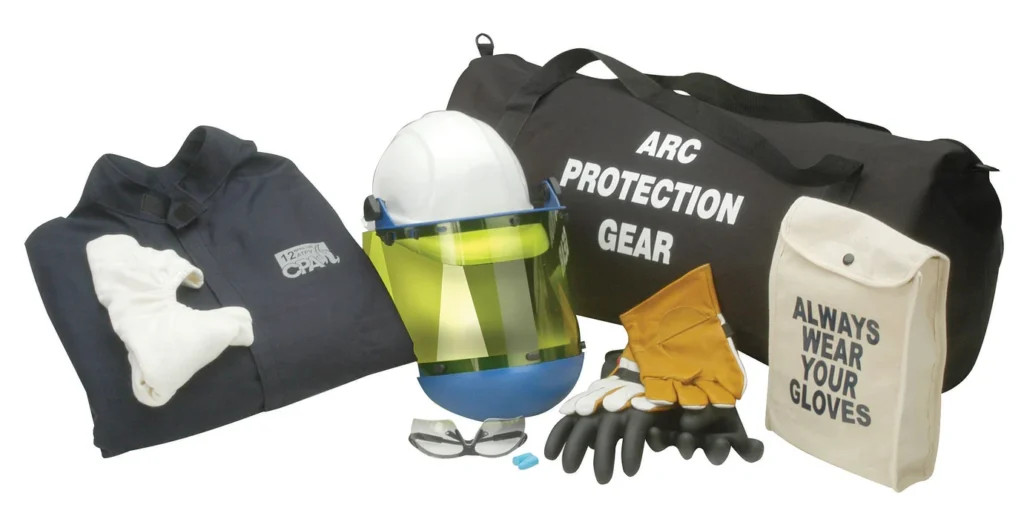Selecting the right Personal Protective Equipment (PPE) for arc protection involves several key steps to ensure safety and compliance with relevant standards. Here’s a guide to help you choose the appropriate PPE for arc flash protection:

1. Conduct an Arc Flash Hazard Assessment
- Identify Potential Hazards: Determine the areas and equipment that may present arc flash hazards.
- Calculate Incident Energy: Assess the potential incident energy exposure in calories per square centimeter (cal/cm²).
2. Determine the Required PPE Category
- Use NFPA 70E Standards: Refer to the National Fire Protection Association (NFPA) 70E standard, which categorizes PPE into four levels based on the severity of the potential arc flash incident energy.
- PPE Categories:
- Category 1: 4 cal/cm²
- Category 2: 8 cal/cm²
- Category 3: 25 cal/cm²
- Category 4: 40 cal/cm²
3. Select Appropriate PPE Components
- Arc-Rated Clothing: Choose clothing rated for the calculated incident energy level. This includes:
- Shirts and Pants: Ensure these garments cover the entire body.
- Coveralls or Arc Flash Suits: For higher energy levels, coveralls or full-body suits are required.
- Head Protection:
- Arc-Rated Hoods or Face Shields: Protect the face and neck from potential burns.
- Hard Hats: Often required in combination with face shields.
- Hand Protection:
- Arc-Rated Gloves: Ensure gloves are rated for the specific hazard level.
- Foot Protection:
- Arc-Rated Boots: Provide protection for the feet.
- Hearing Protection:
- Earplugs or Earmuffs: Protect against the noise of an arc blast.
4. Consider Comfort and Mobility
- Proper Fit: Ensure that PPE fits correctly to allow for ease of movement.
- Breathability: Choose fabrics that provide comfort and reduce heat stress.
5. Verify PPE Ratings and Standards Compliance
- Arc Rating: Ensure all PPE components have an arc rating that meets or exceeds the potential incident energy.
- Standards Compliance: Verify that PPE complies with relevant standards such as NFPA 70E, ASTM F1506, and IEC 61482.
6. Inspect and Maintain PPE
- Regular Inspections: Check PPE for damage, wear, and tear before each use.
- Proper Storage: Store PPE in a manner that prevents damage and contamination.
- Cleaning and Maintenance: Follow manufacturer guidelines for cleaning and maintaining PPE to ensure its effectiveness.
7. Training and Education
- Employee Training: Ensure that all personnel are trained in the proper use, care, and limitations of arc-rated PPE.
- Safety Procedures: Implement and enforce safety procedures for working in areas with arc flash hazards.
Example PPE Selection by Hazard Level
| Incident Energy (cal/cm²) | PPE Recommendation |
|---|---|
| <4 | AR shirt/pants (8 cal), face shield, leather gloves |
| 4–40 | Multi-layer AR suit (25–40 cal), hood, insulated gloves |
| >40 | Custom AR suit with cooling vest, full-face respirator |
By following these steps, you can ensure that you select the appropriate PPE for arc protection, providing maximum safety for personnel working in environments with potential arc flash hazards.

